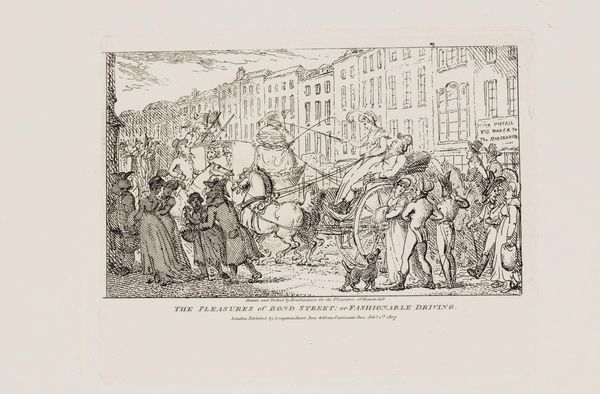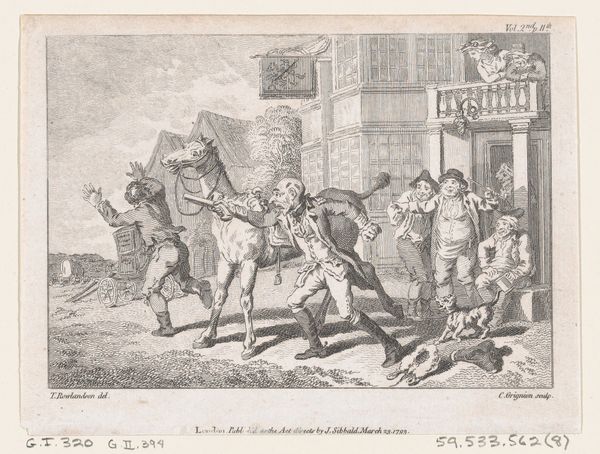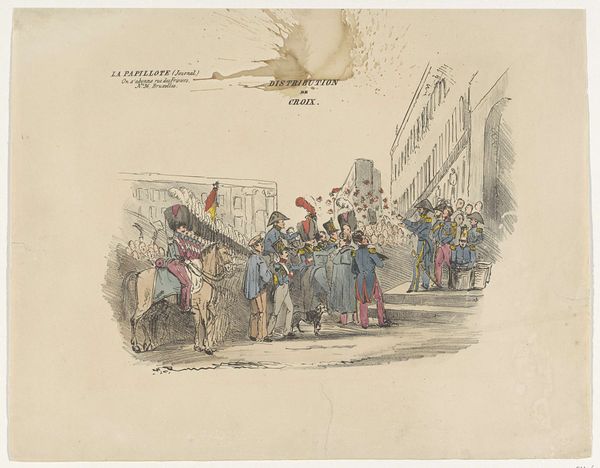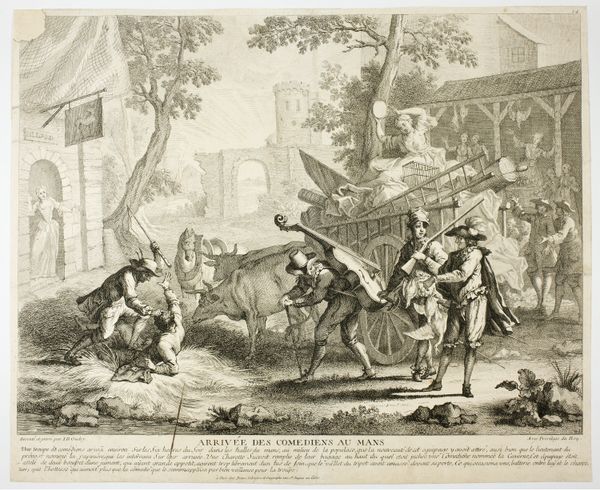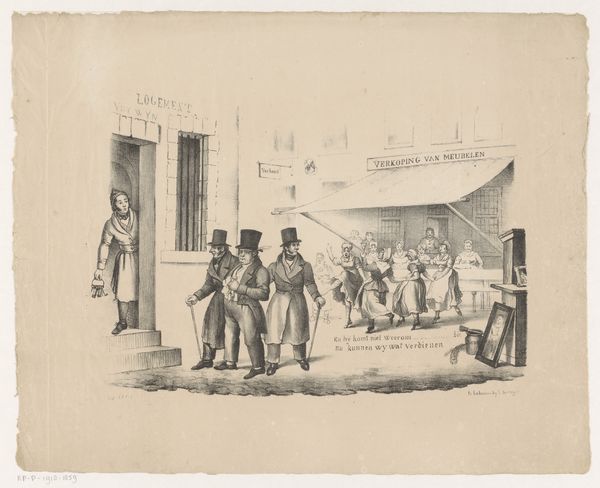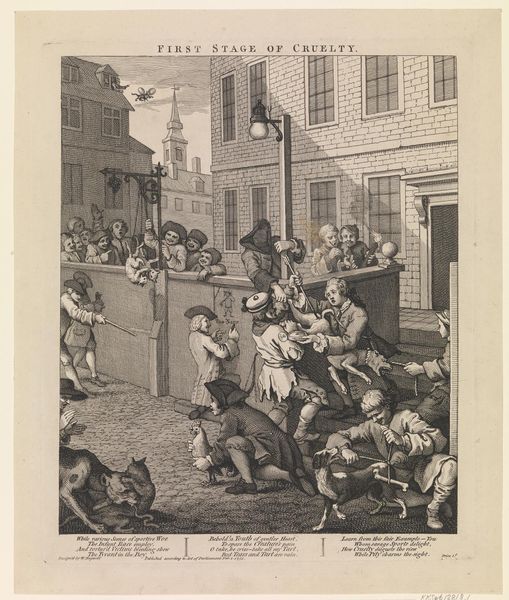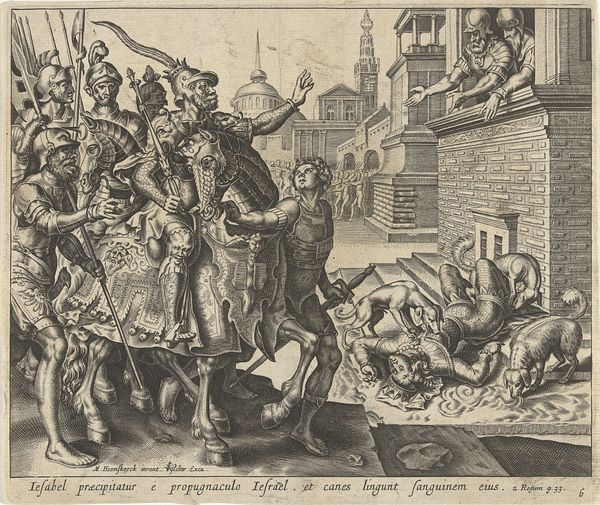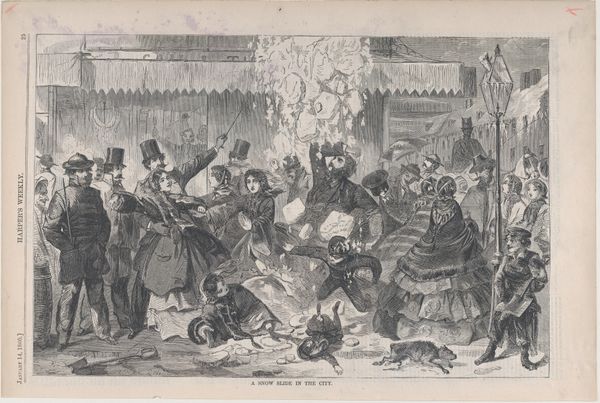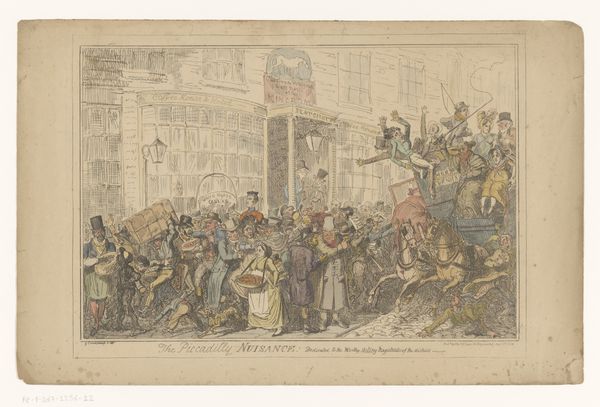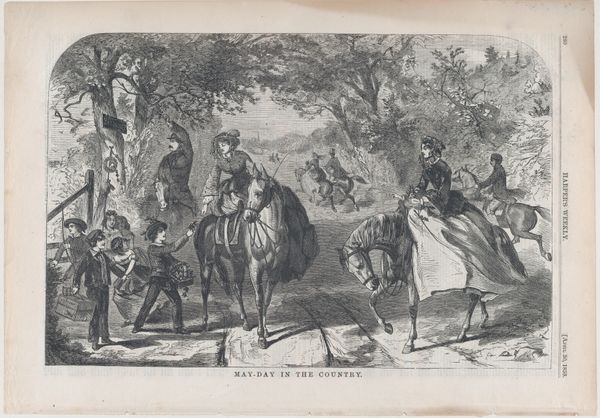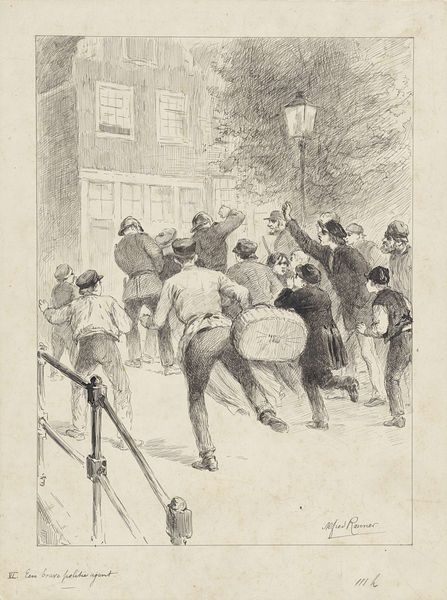
drawing, ink, pen
#
drawing
#
ink drawing
#
pen sketch
#
ink
#
pen
#
genre-painting
#
history-painting
#
realism
Dimensions: 160 mm (height) x 237 mm (width) (bladmaal)
Editor: Here we have "Gadescene fra Madrid," or "Street Scene from Madrid," an ink and pen drawing made between 1878 and 1880. There's so much going on. I’m struck by how realistically it seems to depict everyday life, almost like a snapshot, yet it's incredibly detailed and textured. What do you see in this piece in terms of its broader context? Curator: Well, it’s important to consider this drawing within the rising tide of Realism in the late 19th century. Artists were turning away from idealized depictions, choosing instead to portray contemporary life, often focusing on the working class and urban environments. This street scene captures a moment, seemingly insignificant, yet teeming with social information. What does it tell us about class and labor? Editor: I notice the diverse figures – the merchants with their overturned cart, children, what appears to be a clergyman, even a soldier on horseback in the background. They all seem caught in their own worlds within the same space. Was there a political message in showing such scenes? Curator: Absolutely. Realism often served as a commentary on social structures. The artist isn't just showing us a street; they’re showing us a stratified society. Notice the emphasis on the laborers struggling with their cart. Are they idealized? Are they romanticized? How does the artist treat the figure on horseback versus the figure of the child? The focus on everyday struggle carries political weight; it invited viewers to consider the lives and conditions of those often ignored in more traditional art. The increasing popularity of Realism coincides with a time of growing social awareness and upheaval throughout Europe. Editor: So, the drawing acts almost as a social document? Curator: Precisely. It's not just a pretty picture; it's a record of a specific time and place, filtered through the artist's perspective, meant to spark conversations and potentially even inspire change. What does it spark in you? Editor: I guess I see the power of art to make the ordinary extraordinary and to reveal the complexities of even the simplest street scene. It makes you think about who is represented and how. Curator: Exactly. And that's the ongoing conversation that art invites us into.
Comments
No comments
Be the first to comment and join the conversation on the ultimate creative platform.
